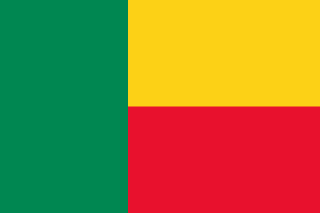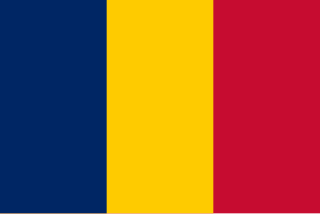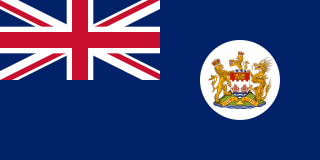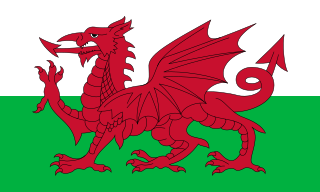 W
WThe national flag of Benin is a flag consisting of two horizontal yellow and red bands on the fly side and a green vertical band at the hoist. Adopted in 1959 to replace the French Tricolour, it was the flag of the Republic of Dahomey until 1975, when the People's Republic of Benin was established. The new regime renamed the country and changed the flag to a green field with a red star in the canton. This version was utilized until the regime collapsed in 1990, coinciding with the Revolutions of 1989. The new government promptly restored the original pre-1975 flag.
 W
WThe flag of Brunei has a centered emblem of Brunei on a yellow field cut by black and white diagonal stripes. The yellow field represents the sultan of Brunei. The red crest consists of a crescent facing upwards, joined with a parasol, with hands on the sides. Black and white stripes run across the flag.
 W
WThe national flag of Chad is a vertical tricolour consisting of a blue, a gold and a red field. Since the 1990s, its similarity to the flag of Romania has caused international discussion. In 2004, Chad asked the United Nations to examine the issue; however, Ion Iliescu, the President of Romania, announced no change would occur to the flag, as the existence of Romania's tricolour predates the existence of Chad as a whole.
 W
WThe national flag of the Republic of the Congo consists of a yellow diagonal band divided diagonally from the lower hoist-side corner, with a green upper triangle and red lower triangle. Adopted in 1959 to replace the French Tricolour, it was the flag of the Republic of the Congo until 1970, when the People's Republic of the Congo was established. The new regime changed the flag to a red field with the coat of arms of the People's Republic in the canton. This version was utilized until the regime collapsed in 1991. The new government promptly restored the original pre-1970 flag.
 W
WThe flag of Singapore was adopted in 1959, the year Singapore became self-governing within the British Empire. It remained the national flag upon the state's independence from Malaysia on 9 August 1965. The design is a horizontal bicolour of red above white, overlaid in the canton by a white crescent moon facing a pentagon of five small white five-pointed stars. The elements of the flag denote a young nation on the ascendant, universal brotherhood and equality, and national ideals.
 W
WThe Flag of Hong Kong between 1959 and 1997 was a Blue Ensign with the coat of arms of Hong Kong on a white disk. In Hong Kong, it is also nicknamed the Hong Kong flag (香港旗), British Hong Kong flag (英屬香港旗) or the Dragon and Lion flag (龍獅旗). In 1959, following a grant from the College of Arms and with the consent of Queen Elizabeth II, it was adopted as the flag of British Hong Kong. While the flag lost its official status following the 1 July 1997 transfer of sovereignty over Hong Kong, it resurfaced in the 2010s as a symbol of increased Hong Kong autonomy and protest against Communist Chinese rule in Hong Kong.
 W
WThe flag of Ivory Coast features three equal vertical bands of orange, white, and green. It is also the national emblem of the Republic of Ivory Coast. Its status as the national emblem is affirmed in article 29 of the Constitution of Ivory Coast since 1960. The flag has the proportions of 2:3.
 W
WThe flag of Mauritania is a green field containing a gold star and crescent, with a red stripe at the top and bottom of the field. The original national flag was introduced under the instructions of President Moktar Ould Daddah and the constitution of 22 March 1959 and was adopted on 1 April 1959.
 W
WThe flag of the Netherlands Antilles was white, with a horizontal blue stripe in the center, one-third of the flag's hoist, superimposed on a vertical red stripe of the same width, also centered; six white, five-pointed stars are arranged in a pentagon pattern in the center of the blue band, their points up. It was adopted on 19 November 1959.
 W
WThe Flag of Niger has been the national symbol of the West African Republic of Niger since 1959, a year prior to its formal independence from French West Africa. It uses the national colors of orange, white and green, in equal horizontal bands, with an orange roundel in the center. The flag forms one of the official national symbols of the Republic of Niger, with the coat of arms of Niger, the National Anthem, the coat of arms, and the motto: "Fraternité, Travail, Progrès". These form Article 1 of the first part of the 1999 Constitution of Niger. The flag is similar to that of India, but differenced by the ratio, color shades, and details of disc in the center.
 W
WThe flag of North Brabant consists of a chequy pattern with 24 distinct fields in the colours red and white or gules and argent. The flag has been used since the Middle Ages, but fell into disuse in the 18th century. Thanks to the State Archivist (rijksarchivaris) Mr. J. Smit, the flag is back in use. It has been the official flag of North Brabant since 1959.
 W
WThe Flag of Wales consists of a red dragon passant on a green and white field. As with many heraldic charges, the exact representation of the dragon is not standardised and many renderings exist. The flag is not represented in the Union Flag.